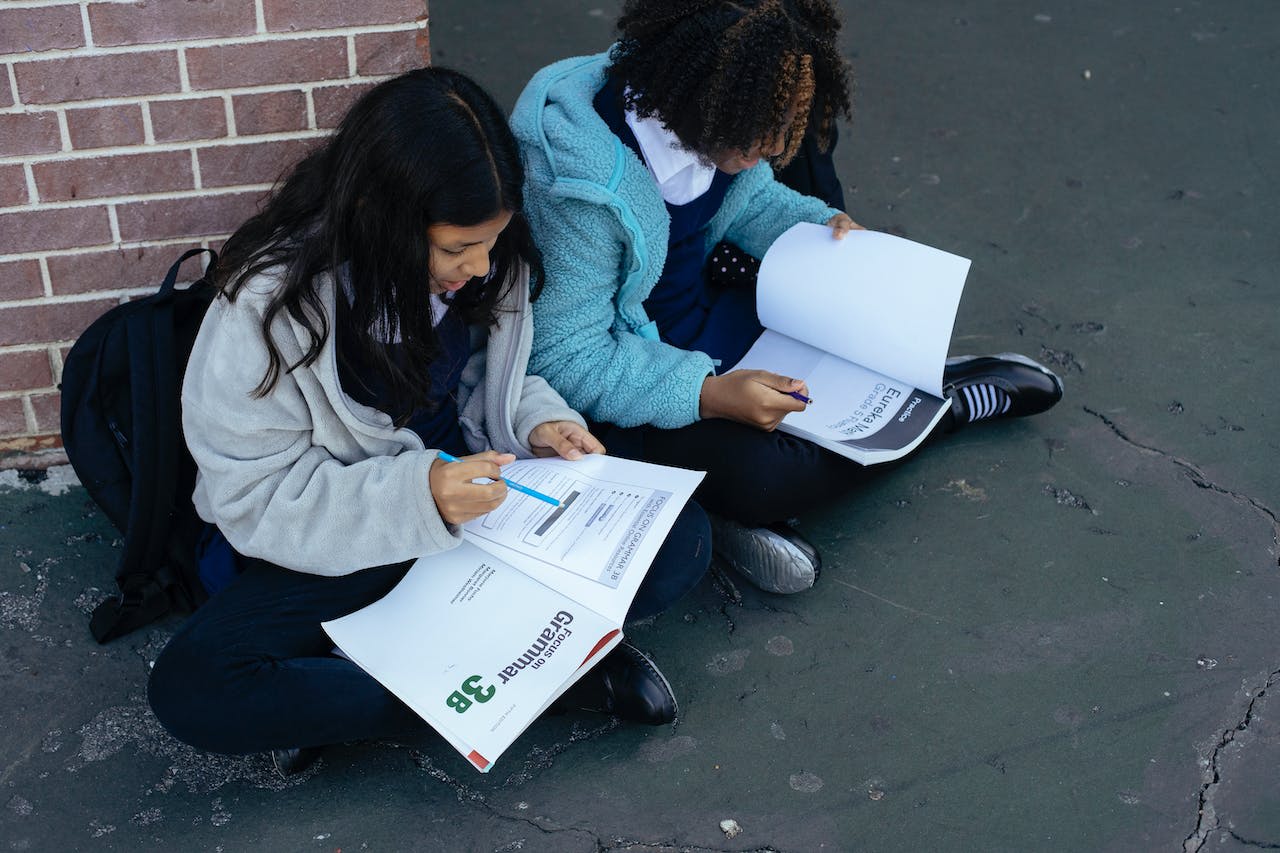Student motivation and academic achievement
Motivation is a pivotal force shaping the trajectory of students' academic achievements. It acts as a driving factor influencing their engagement, persistence, and overall success in the learning process.

Motivation is a pivotal force shaping the trajectory of students' academic achievements. It acts as a driving factor influencing their engagement, persistence, and overall success in the learning process. Understanding the dynamics of the relationship between student motivation and academic achievement is essential for educators, parents, and administrators seeking to create an environment conducive to learning.
Several seminal studies underscore the importance of motivation in academic settings. Dweck's work on mindset highlight how individual' beliefs about their abilities and the fulfillment of their psychological needs impact their motivation and, consequently, their performance. In this article, we discuss the intricate interplay between student motivation and academic achievement.
💡 Lessons learnt: The hallmark of a great educator is to awaken joy in creative expression and knowledge.
Theories of Student Motivation
Two widely acknowledged theories are Carol Dweck's Growth Mindset and Deci and Ryan's Self-Determination Theory.
Dweck's Growth Mindset theory posits that students' beliefs about intelligence can significantly impact their motivation and academic success. Individuals with a growth mindset perceive intelligence as malleable, believing that effort and perseverance lead to improvement. On the contrary, those with a fixed mindset see intelligence as static, leading to a fear of failure and a tendency to avoid challenges.
Numerous studies have affirmed the positive correlation between a growth mindset and academic achievement. For instance, a study by Blackwell et al. (2007) found that teaching students about the concept of a growth mindset resulted in improved math grades and increased motivation.
Deci and Ryan's Self-Determination Theory posits that individuals have innate psychological needs for autonomy, competence, and relatedness. When these needs are satisfied, individuals are more likely to be intrinsically motivated, leading to better academic outcomes.
Research by Vansteenkiste et al. (2006) supports the connection between autonomy support in the learning environment and increased academic motivation. Students who perceive their learning environment as supportive of their autonomy are more likely to exhibit higher levels of engagement and achievement.
These theories highlight the importance of fostering a positive and supportive learning environment that encourages a growth mindset and satisfies students' psychological needs.
Motivation and Learning Behaviors
Motivation serves as a driving force shaping students' learning behaviors and study habits.
Intrinsic vs. Extrinsic Motivation
Motivation can be broadly categorized into intrinsic and extrinsic forms. Intrinsic motivation arises from internal factors, where individuals find inherent enjoyment and satisfaction in the learning process. On the other hand, extrinsic motivation stems from external rewards or consequences.
Studies, such as that conducted by Vallerand (1997), emphasize the positive impact of intrinsic motivation on academic achievement. Students intrinsically motivated to learn are more likely to demonstrate perseverance, curiosity, and a genuine interest in the subject matter, ultimately leading to improved academic performance.
The Role of Goal Orientation
Goal orientation refers to an individual's underlying reasons or motives for engaging in a particular activity or pursuing a specific goal. There are two primary types of goal orientation: performance orientation and mastery orientation.
Performance Orientation:
- Performance-Prove Orientation: Individuals with a performance-prove orientation seek to demonstrate their competence and outperform others. They are motivated by the desire to receive positive feedback and recognition for their abilities.
- Performance-Avoid Orientation: Those with a performance-avoid orientation are driven by a fear of failure and aim to avoid negative judgments or criticism. Their focus is on avoiding mistakes and appearing competent.
Mastery Orientation:
- Individuals with a mastery orientation are motivated by a desire to develop their skills, learn new things, and master the task at hand. They are less concerned with social comparison or external evaluations and more focused on personal improvement and growth.
Goal orientation plays a vital role in shaping students' study habits. Students with a mastery goal orientation focus on understanding the material and mastering skills, leading to deeper learning and better academic outcomes. In contrast, those with a performance goal orientation may prioritize achieving high grades without necessarily grasping the material's intricacies.
Research by Midgley et al. (2000) suggests that fostering a mastery goal orientation contributes to higher levels of motivation and academic achievement. When students perceive their goals as learning-oriented rather than performance-oriented, they are more likely to engage in effective study strategies and exhibit a deeper understanding of the content.
Understanding and leveraging these aspects of motivation can guide educators in tailoring their teaching approaches to promote intrinsic motivation and cultivate a mastery-oriented learning environment.
Motivation, Persistence, and Resilience
Motivation is not only a driving force for initial engagement but also a key factor in determining students' ability to persist through challenges and bounce back from setbacks. Examining the relationship between motivation and academic persistence sheds light on the development of resilience in students.
Academic Persistence
Persistence in the face of challenges is a hallmark of motivated students. Research by Duckworth et al. (2007) suggests that grit, defined as passion and perseverance for long-term goals, is a significant predictor of academic success. Students who exhibit high levels of grit are more likely to overcome obstacles and persist in their academic pursuits.
Educators play a crucial role in nurturing grit by fostering an environment that encourages effort and resilience. Strategies such as setting realistic goals, providing constructive feedback, and highlighting the value of perseverance contribute to building students' capacity for sustained effort.
Building Resilience through Motivation
Resilience, the ability to bounce back from setbacks, is closely intertwined with motivation. Students who are intrinsically motivated and possess a growth mindset are more resilient in the face of academic challenges.
Dweck's research (2010) indicates that individuals with a growth mindset view challenges as opportunities for learning and improvement, leading to increased resilience. When students believe that their efforts contribute to their growth and development, setbacks become temporary roadblocks rather than insurmountable obstacles.
Educators can foster resilience by promoting a growth mindset, providing support during challenging times, and emphasizing the learning process rather than focusing solely on outcomes. By doing so, they contribute to the development of students who are not only motivated but also equipped to navigate the inevitable ups and downs of academic life.
Parental Involvement and School Environment
The Impact of Parental Involvement
Research consistently highlights the positive correlation between parental involvement and student motivation. Jeynes (2007) conducted a meta-analysis of studies on parental involvement and found that students with involved parents exhibit higher levels of motivation, better academic performance, and improved attitudes toward school.
Parental involvement takes various forms, including monitoring homework, attending school events, and openly communicating with teachers. These actions contribute to creating a supportive home environment that reinforces the value of education and fosters intrinsic motivation in students.
The Role of the School Environment
The broader school environment plays a significant role in shaping student motivation. A study by Wentzel (1998) emphasizes the importance of a positive and inclusive school climate in promoting student motivation and academic achievement. When students feel a sense of belonging and support within the school community, their motivation to engage in learning is heightened.
Educational leaders and administrators play a pivotal role in shaping the school environment. Implementing policies that promote inclusivity, providing resources to support diverse learning styles, and fostering a culture of respect contribute to a positive school climate that nurtures student motivation.

Adiutor
Adiutor means "helper" - we do just that, by taking a load of your school administration and helping you focus on what matters most: the kids.
References
Blackwell, L. S., Trzesniewski, K. H., & Dweck, C. S. (2007). Implicit theories of intelligence predict achievement across an adolescent transition: A longitudinal study and an intervention. Child Development, 78(1), 246-263.
Deci, E. L., & Ryan, R. M. (1985). Intrinsic motivation and self-determination in human behavior. New York: Plenum.
Duckworth, A. L., Peterson, C., Matthews, M. D., & Kelly, D. R. (2007). Grit: Perseverance and passion for long-term goals. Journal of Personality and Social Psychology, 92(6), 1087–1101.
Dweck, C. S. (2006). Mindset: The new psychology of success. New York: Random House.
Dweck, C. S. (2010). Even geniuses work hard. Educational Leadership, 68(1), 16-20.
Jeynes, W. H. (2007). The relationship between parental involvement and urban secondary school student academic achievement: A meta-analysis. Urban Education, 42(1), 82-110.
Midgley, C., Kaplan, A., & Middleton, M. (2000). Performance-approach goals: Good for what, for whom, under what circumstances, and at what cost? Journal of Educational Psychology, 92(1), 122–130.
Vansteenkiste, M., Simons, J., Lens, W., Sheldon, K. M., & Deci, E. L. (2006). Motivating learning, performance, and persistence: The synergistic effects of intrinsic goal contents and autonomy-supportive contexts. Journal of Personality and Social Psychology, 90(2), 223-236.
Vallerand, R. J. (1997). Toward a hierarchical model of intrinsic and extrinsic motivation. Advances in Experimental Social Psychology, 29, 271-360.
Wentzel, K. R. (1998). Social relationships and motivation in middle school: The role of parents, teachers, and peers. Journal of Educational Psychology, 90(2), 202–209.
